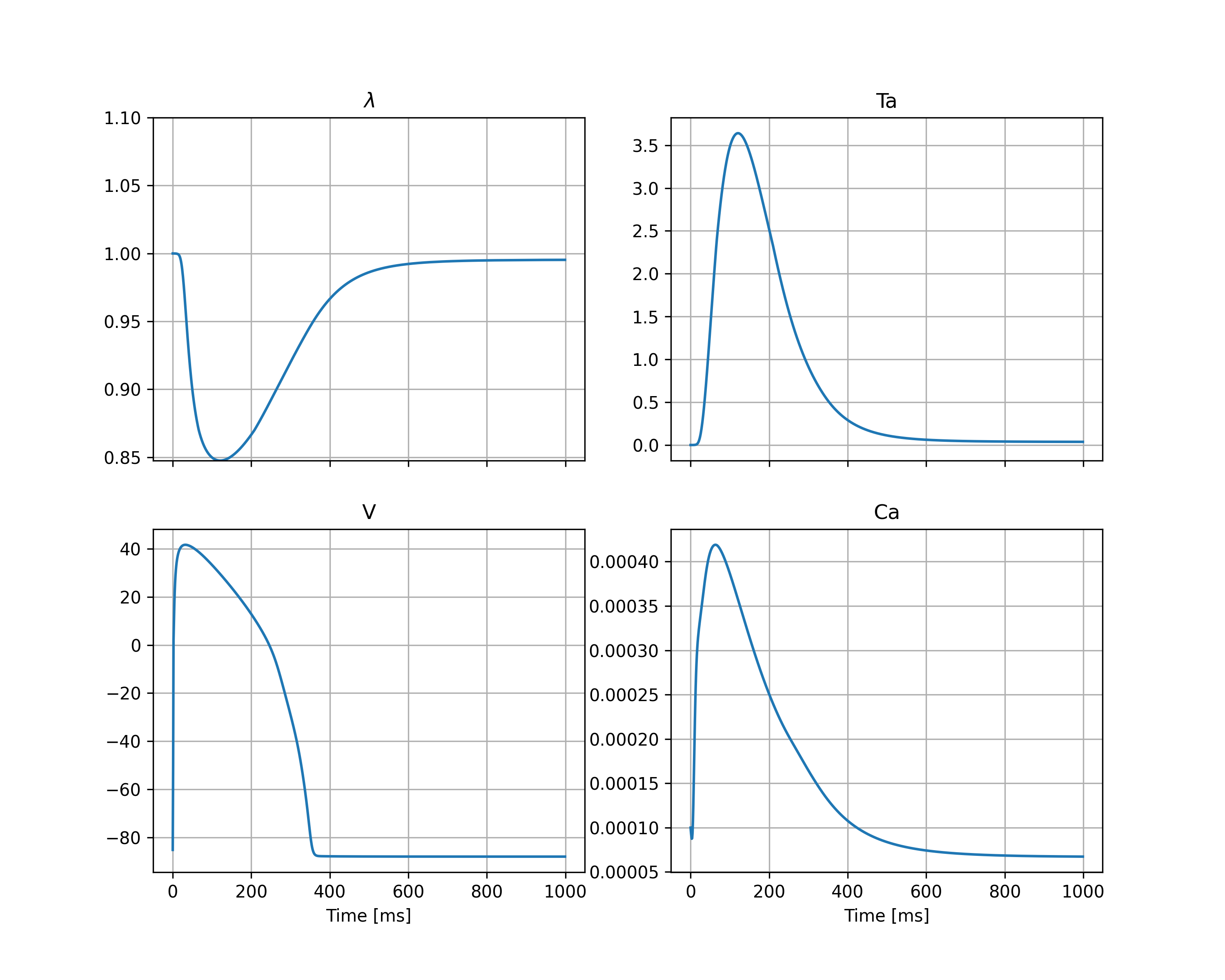Drug effects demo#
In this demo we show how to modulate the cell model with pharmacological effects
import pprint
from pathlib import Path
import simcardems
# Create configurations with custom output directory
here = Path(__file__).absolute().parent
outdir = here / "results_drug_demo"
# Specify paths to the geometry that we will use
geometry_path = here / "geometries/slab.h5"
geometry_schema_path = here / "geometries/slab.json"
Please see https://computationalphysiology.github.io/cardiac_geometries/ for more info about the geometries
# Specify path to the file containing drug scaling factors
drug_factors_path = here / "drug_factors/drug_factors.json"
The scaling factors in this file are applied to the corresponding ion currents as a modulator of the ion channel conductance. The example file reduces the sodium current to 10%.
config = simcardems.Config(
outdir=outdir,
geometry_path=geometry_path,
geometry_schema_path=geometry_schema_path,
T=1000,
drug_factors_file=drug_factors_path,
)
# Print current configuration
pprint.pprint(config.as_dict())
runner = simcardems.Runner(config)
runner.solve(T=config.T, save_freq=config.save_freq, show_progress_bar=True)
This will create the output directory results_drug_demo with the following output
results_simple_demo
├── results.h5
├── state.h5
The file state.h5 contains the final state which can be used if you want use the final state as a starting point for the next simulation.
The file results.h5 contains the Displacement (\(u\)), active tension (\(T_a\)), voltage (\(V\)) and calcium (\(Ca\)) for each time step.
We can also plot the traces using the postprocess module
simcardems.postprocess.plot_state_traces(outdir.joinpath("results.h5"), "center")
Here we also specify that we want the trace from the center of the slab
This will create a figure in the output directory called state_traces.png which in this case is shown in Figure 5 we see the resulting state traces.

Fig. 5 Traces of the stretch (\(\lambda\)), the active tension (\(T_a\)), the membrane potential (\(V\)) and the intercellular calcium concentration (\(Ca\)) at the center of the geometry.#
We can also save the output to xdmf-files that can be viewed in Paraview
simcardems.postprocess.make_xdmffiles(outdir.joinpath("results.h5"))
The xdmf files are can be opened in Paraview to visualize the different variables.
